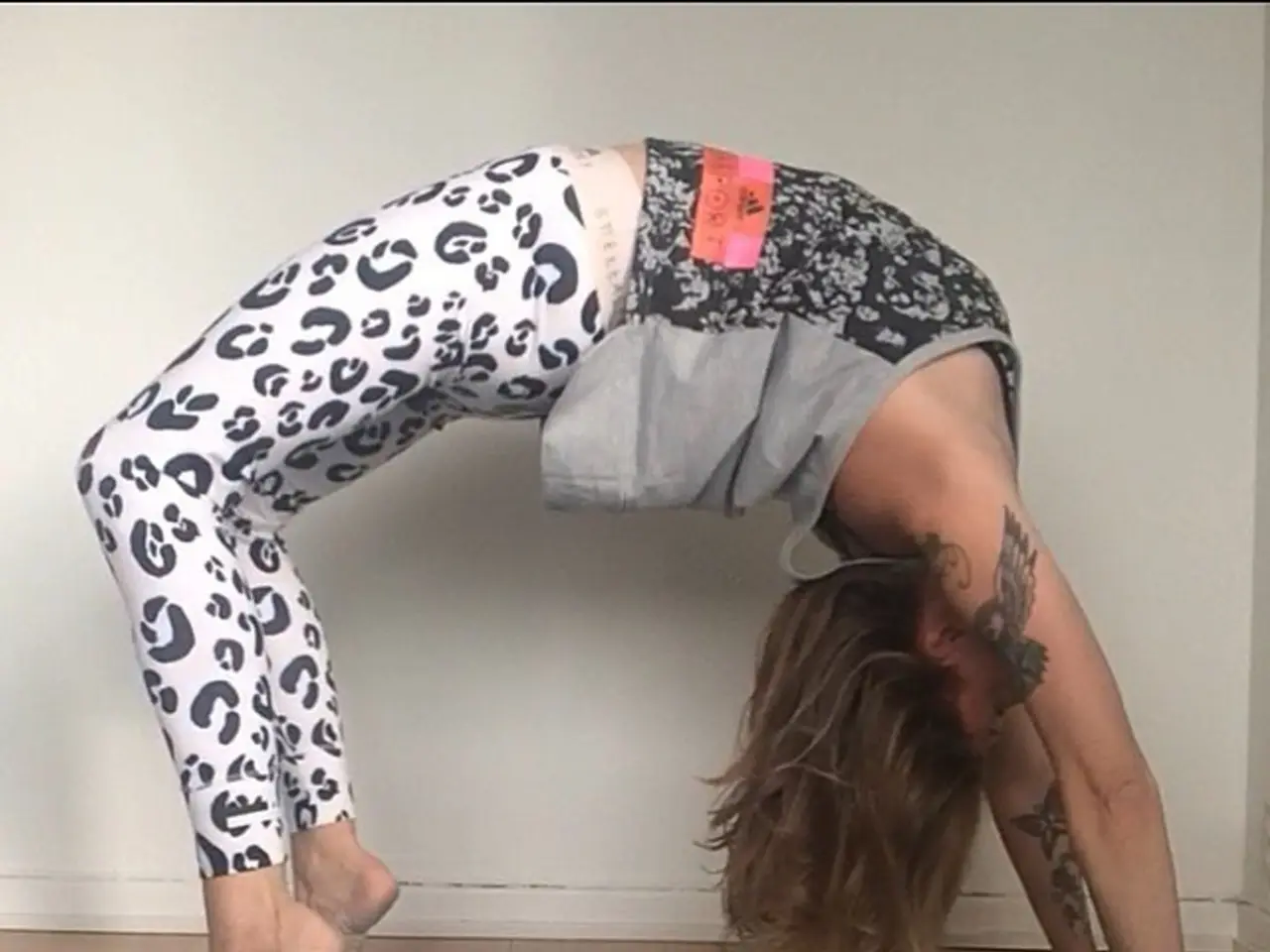Health Market Insights: Latest Trends, Analyses, and Industry Expansion in Wellness Sector
Here's the fresh, original version of the article
Updated | February 18, 2025
The Wellness Revolution is in full swing, baby, and it ain't just about those Insta-worthy smoothie bowls anymore! This rapidly expanding $6.3 trillion industry has transformed digital solutions like meditation apps and fitness trackers into daily necessities. From AI-driven fitness plans to custom mental health apps, what was once a niche market is now an essential part of life (or, at least, our smartphone screens). So, what's the deal? Where's it heading next? Let's dive into the latest trends, challenges, and opportunities that lie ahead.
Embracing the Wellness Movement
The wellness industry encompasses a multitude of sectors, each contributing uniquely to shape its future. Here's a breakdown of the major areas:
Fitness and Physical Wellness
Staying active is the key to good health, and this wellness area focuses on just that. From traditional gyms to studios offering specialized fitness experiences, technology plays a significant role here. Wearable fitness trackers and virtual workout platforms help individuals manage their health effortlessly. With continuous technological advancements, new approaches and personalized programs are continually popping up to meet individual needs. But remember, the core principle remains: keep moving to stay fit!
Mental Well-being
With stress levels hitting new highs every day, the recognition of adequate mental health is on the rise. The industry has expanded resources and support systems to offer meditation and mindfulness apps that help with stress reduction and emotional regulation. Telehealth platforms connect individuals with licensed mental health professionals for accessible therapy, contributing to the growth of the wellness market. Stress management programs equip people with coping mechanisms and strategies. The future of wellness lies in AI-driven personalization and preventive care.
Preventive and Holistic Health
A preventive approach to health and increased focus on holistic well-being define this area of the industry. Massage, aromatherapy, and acupuncture are the foundational pillars of holistic therapies. They interconnect mind, body, and spirit, striking a balance and preventing illness through natural methods. It's time to educate the masses on the benefits of active participation in their health management.
Nutrition and Healthy Eating
The phrase "food as medicine" is gaining traction these days, and researchers in the industry are delving deep into the impact of nutrition on overall well-being. Registered dietitians and nutritionists provide personalized guidance tailored to individual requirements. The emphasis is on balancing nutrition and making better food choices to fuel the body instead of just filling the stomach or satisfying cravings.
Personal Care and Beauty
This area focuses on products and services that enhance physical appearance and promote personal hygiene. From skin and hair care to cosmetics and beauty treatments, it recognizes the connection between personal care and self-esteem. Emphasis is placed on self-care practices to promote confidence and overall well-being.
The Size and Growth of the Wellness Industry
Health and wellness industry statistics show that the global wellness economy has demonstrated resilience and expansion, particularly post-2019 (yeah, that was when the COVID thing happened). According to research by the Global Wellness Institute (GWI), the wellness industry net worth reached a peak of $6.3 trillion in 2023, accounting for 6.03% of the global GDP. This upward trajectory is expected to continue with a CAGR of 7.3% from 2023 to 2028, reaching a valuation of nearly $9 trillion by 2028.
Market Segmentation and Insights
Breaking down the wellness business reveals various sectors. Here's a snapshot of some of them and their respective market sizes:
- Healthy Eating, Nutrition, and Weight Loss: This sector is valued at $260.7 billion in 2022 and is projected to reach $532.5 billion by 2032, emphasizing the importance of nutrition and weight management in overall health.
- Wellness Tourism: At $909.82 billion in 2023, wellness tourism reflects the growing trend of individuals seeking travel experiences that cater to health and well-being.
- Fitness and Mind-Body: This sector is valued at $257 billion in 2025, highlighting the widespread adoption of fitness and mind-body practices as integral to a healthy lifestyle.
- Mental Wellness: With a market size of $150.25 billion in 2024, this sector is poised for growth as awareness of mental health issues increases globally.
Next-Level Trends Shaping the Wellness Industry
Several transformative trends are currently shaping the direction of the wellness industry:
1. Home-based Health Services
The COVID-19 pandemic accelerated the adoption of home-based healthcare solutions, including telemedicine and personalized wellness plans. People sought health solutions from the comfort of their homes, leading to an overall shift towards home-based health management.
2. AI-driven Wellness Solutions
Personalized wellness experiences are more achievable than ever thanks to technological advancements. Wearable devices like Fitbit, Apple Watch, or Oura Rings monitor health metrics in real-time to provide users with tailored recommendations. AI-driven applications analyze individual data to offer customized nutrition and fitness plans. The future is packed with more advanced tools and digital wellness solutions.
3. Science-backed Products
People are increasingly demanding products backed by real science rather than trends. Studies show that 82% of the US population consider wellness a top priority, driving demand for products with proven efficacy. Brands that invest in clinical research and maintain transparency in their product claims are more likely to gain consumer trust and loyalty.
4. Growing Awareness of Mental Wellness
Mental health is no longer a taboo subject. With anxiety rates, depression, and stress levels on the rise, it has become a focal point of the wellness industry. The mental health and wellness sector is projected to expand rapidly with an annual growth rate of 12.8% through 2027, reaching a market size of $330 billion by then.
The Future of the Global Wellness Economy
The health and wellness industry is transforming lifestyles while powering the economy. As more people prioritize their health and invest in wellness solutions, the industry benefits. Here's a quick rundown of the economic impact:
- Job Creation and Revenue Generation: In the United States alone, the health and wellness industry employs over 5 million people across various sectors, from healthcare and fitness to nutrition and beauty. Globally, wellness tourism supports around 21 million jobs.
- Corporate Wellness: The corporate wellness market is valued at $3.81 billion, with companies focusing on employee fitness incentives, stress management programs, and mental health support.
- Wellness Tourism: The global wellness tourism market was worth $909.82 billion in 2023 and is projected to grow rapidly over the next decade. Countries like Thailand, Indonesia, and Costa Rica are capitalizing on this trend by investing in wellness tourism infrastructure.
Opportunities for Growth in the Changing Wellness Market
The health and wellness industry is moving at lightning speed, and there are numerous opportunities for businesses. Here's where the opportunities lie:
1. AI-driven Personalization
Gone are the days of one-size-fits-all solutions. People expect personal touches even in health solutions that align with their unique needs, goals, and lifestyles. Thanks to AI, ML, and data analytics, software development companies can now deliver customized fitness routines, nutrition plans, sleep recommendations, and mental wellness support in ways never seen before.
2. Focus on Mental Wellness
Mental health is no longer associated only with physical fitness. With stress, anxiety, and burnout becoming common, people are searching for evidence-based solutions to improve their mental health. Software development companies that provide fitness app development services can combine mental wellness with fitness and other areas of health for a competitive edge.
3. Emphasis on Preventive Health
Preventative care is taking center stage. Instead of waiting for health problems to occur, people are seeking solutions that help them stay ahead of illnesses rather than just treating symptoms. Personalized nutrition plans, DNA-based recommendations, and wearables tracking long-term health markers are just the beginning.
Challenges and Opportunities in the Evolving Wellness Market
The health and wellness industry is thriving, but it also faces a set of challenges. Let's take a closer look at the common roadblocks and potential solutions:
1. Market Saturation
With every new trend in the market, brands rush to seize the opportunity. Market saturation leaves new businesses struggling to establish a unique identity and retain customers in the long term.
Solution: Brands should focus on a specific niche rather than trying to appeal to everyone. Offering tailored experiences, whether through AI-driven recommendations or personal coaching, creates a deeper connection with users.
2. Navigating Regulatory Compliance
With the convergence of wellness products and the healthcare sector, stricter regulations are a reality. Brands must comply with advertising laws, data protection policies, and health-related regulations.
Solution: Custom software development companies must prioritize compliance by investing in legal counsel and regulatory specialists. Third-party certifications and clear labeling can also help build consumer confidence.
3. Affordability
High-quality wellness services, like organic food, wearable fitness devices, or mental health therapy, often come with a hefty price tag, creating a gap between disposable income and those who can afford premium wellness solutions.
Solution: Companies should maintain pricing structures that cater to everyone. Tiered or subscription-based models enable users to start with affordable plans and upgrade when they're ready.
4. Engaging Users beyond the First Month
Many people sign up for wellness apps, fitness programs, or nutrition coaching, only to abandon the journey after the initial month. Low engagement and high dropout rates affect steady revenue and long-term customer loyalty.
Solution: Consistent engagement requires motivation and interaction. Features like progress tracking, milestone rewards, and personalized reminders help keep users invested. Real coaches or therapists can provide a personal touch that keeps users hooked.
5. Balancing AI and Human Interaction
AI-powered health tools provide personalized recommendations but often lack the human touch people crave when it comes to their health.
Solution: Rather than replacing human interaction entirely, incorporate AI as a supportive character. Pairing AI-generated workout plans with access to live trainers offers the best of both worlds, combining speed and precision with human support when needed.
So there you have it! The health and wellness industry is shaking things up, and it's an exciting time to be part of the revolution. Stay ahead of the curve, stay healthy, and don't forget to enjoy the ride! ✌️
Frequently Asked Questions
How big is the health and wellness industry?
Globally, the wellness industry had an estimated worth of $6.32 trillion in 2023 and is projected to reach nearly $9 trillion by 2028.
What's the future of wellness?
We're moving towards preventative medicine and advances in anti-aging research.
Is the health and wellness industry profitable?
Yes, it is a thriving market with a growing number of entrepreneurs.
The wellness industry is rapidly expanding, reaching an estimated net worth of $6.3 trillion in 2023. It encompasses various sectors, including fitness and physical wellness, mental well-being, preventive and holistic health, nutrition and healthy eating, and personal care and beauty. With the COVID-19 pandemic accelerating home-based health services, telemedicine, and personalized wellness plans are becoming more popular. AI-driven solutions and science-backed products are also transforming the industry, offering personalized recommendations and addressing mental wellness issues. The future of the wellness market is projected to continue growing at a CAGR of 7.3% from 2023 to 2028, reaching a valuation of nearly $9 trillion by 2028.
Opportunities for growth in the industry include AI-driven personalization, focusing on mental wellness, and emphasizing preventive health. Challenges include market saturation, navigating regulatory compliance, affordability, low user engagement, and balancing AI and human interaction. Potential solutions to these challenges include focusing on a specific niche, prioritizing compliance, offering affordable pricing structures, employing consistent engagement strategies, incorporating AI as a supportive character, and pairing AI-generated advice with live human interaction. Overall, the health and wellness industry is a thriving market with significant opportunities for businesses.






